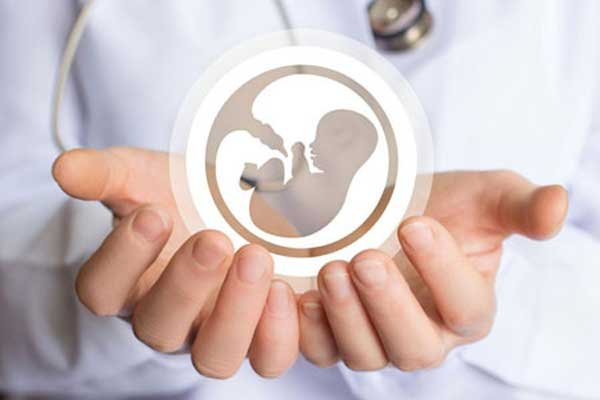Due to the unhealthy lifestyle, the number of men who have too few sperm, or the quality of these spermatozoa is too low for fertilization without treatment by sexologist in Delhi.
Studies on the causes of male infertility are much simpler and cheaper than for women. So do not hesitate to suspect such a problem.
Causes of infertility: sperm is of poor quality
The basic test, in addition to assessing the correctness of genitalia, is semen analysis. They are collected as a result of masturbation, after a minimum of 3 days of sexual abstinence. A healthy, normal ejaculate should have a volume of about 5 ml (teaspoon content), but a range of 2 to 5 ml is allowed. There are 20 to 300 million sperm for each, of which at least 30 percent it should be properly built, and at least 40 percent adequate mobility (average speed not less than 25m / sec).
A single examination does not prejudge infertility. As a rule, the test is repeated after 2-3 months and, if the result is confirmed, further diagnostics and treatment are implemented.
The most common cause of male infertility are disorders related to sperm quality (here, lifestyle, the use of certain medications, e.g. neuroleptics, antidepressants) or testicular damage (testicular torsion, abnormal position, and incorrect penile structure) and age – above 40 years.
Diseases that can affect male fertility
Piggy
This viral disease, one of the typical for childhood, with painful swelling of the salivary glands, neck and jaw, is very dangerous, and not only because the paramixovirus causing it is extremely contagious (easily spreads through the droplet, but even through breathing or using the same dishes). Mainly because about 1/3 of boys may experience inflammatory testicular swelling after puberty. This is a complication that can cause infertility. Until an effective vaccine was introduced in the 1970s, mumps was a very common disease in children. Today it occurs sporadically. However, it is estimated that around 5 percent vaccine people do not develop the desired immunity. In such cases, complications may also occur, the symptoms of which are high fever (over 39.5 degrees C), vomiting, inflammatory changes or swelling of the testicles, severe headache. The appearance of complications requires prompt medical intervention.
Varicose veins of the spermatic cord
The disease consists of widening, spraining, and lengthening the venous vessels that collect blood from the testis and form so-called scrotum within the scrotum. flagellate weave. This plexus is part of the spermatic cord, in its scrotum, above the testicle. Varicose veins of the spermatic cord are most often found in young men. Appear in about 15 percent. men, mainly on the left (90%). Approx. 30-40 percent of men seeking advice for infertility are patients with varicocele. The causes of the disease are seen in the failure or congenital absence of valves in the nuclear veins. This impairs the outflow of venous blood, which “lies” in the veins, exerting excessive pressure on the flagellate plexus and causing it to widen, lengthen and twist.
Varicose veins cause degenerative changes in the testicles – the testicles become chronically hypoxic, overheated. And so for proper sperm development, the temperature in the scrotum should be 2-3 degrees Celsius lower than in the abdomen. In a patient with varicocele, this temperature difference is only 0.1 deg. C. And although varicose veins of the cord occur basically on one side, degenerative changes often affect both testicles (the temperature increases throughout the scrotum). Changes in the testicles reduce the total sperm count and increase the percentage of abnormal sperm.
Kallmann syndrome
This is a genetic disorder characterized mainly by the lack or impairment of smell, but also by delayed puberty or even its absence. Men with Kallmann syndrome have very small testicles, a small penis, very low testosterone levels, and absent olfactory bulbs. The cause of the disease is a deficiency in the secretion of gonadoliberin – gonadotropin-releasing hormone (GnRH). If Kallmann’s syndrome is diagnosed over 16 years of age, eunuchoid proportions of body structure often occur. The shoulder span may exceed 6 cm in height, and the ratio of upper to lower body may be reduced.
Kallmann syndrome gives a fairly good therapeutic prognosis when it comes to the preservation of secondary sexual characteristics, fertility is slightly worse. Patients with testicular sizes over 2.5 cm have a better prognosis.
Pituitary gland failure
Pituitary gland diseases (e.g. pituitary adenoma ) are often associated with gonadotropin deficiency. sterility.
Sexually transmitted infections
As a result of sexually transmitted infections, mainly caused by Chlamydia trachomatis or Mycoplasma hominis, complications can develop that can lead to permanent infertility. Infections with other bacteria can also lead to the maturation of abnormal sperm. Inflammation of the testicles and epididymis, caused by the penetration of e.g. E.coli, Enterococcus faecalis, Ureaplasmaeuraelyticum, can lead to fibrosis in the testicles, which will reduce them and even disappear.
Inflammation of the prostate gland and seminal vesicles
This disease can prevent sexual intercourse and also lead to adverse changes in semen, significantly reducing the ability of sperm to fertilize.



